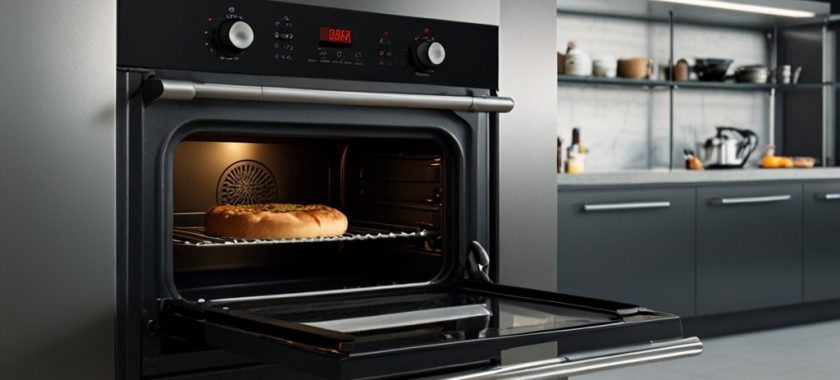The oven is a cornerstone of the modern kitchen, facilitating everything from simple meals to elaborate dinners. A key component to its functionality and efficiency is the ventilation system. Proper oven ventilation ensures that smoke, steam, and cooking odors are efficiently expelled from your kitchen, maintaining air quality and preventing potential safety hazards. However, over time, this system can become clogged with grease and debris, diminishing its effectiveness. Maintaining your oven’s ventilation system is crucial for its optimal performance and longevity. This article provides comprehensive tips on how to keep your oven’s ventilation system in top shape and highlights the importance of professional maintenance services.
Understanding the Oven Ventilation System
Oven ventilation systems come in various configurations, but their primary function is the same: to remove air contaminants and excess heat from the cooking area. The two most common types are:
Range Hoods: Installed above the oven, these hoods capture smoke, grease, and steam, then either filter and recirculate the air (ductless) or expel it outside through ductwork (ducted).
⠀
Built-in Oven Ventilation: Some ovens have built-in vents that expel hot air and fumes directly outside or through a secondary ventilation system connected to the oven.
Steps to Maintain Your Oven Ventilation System
Regular maintenance of your oven’s ventilation system is crucial to ensure efficient operation and avoid potential health hazards. Here’s how you can keep it in top condition:
- Regular Cleaning of Ventilation Filters
⠀
Filters in your oven’s ventilation system trap grease and other particles, preventing them from entering the ductwork or being recirculated into your kitchen. Regular cleaning is essential:
⠀
– Metal Mesh Filters: Typically found in range hoods, these filters should be cleaned every month. Soak them in hot, soapy water for about 15 minutes, then scrub with a non-abrasive brush. Rinse and dry thoroughly before reinstallation.
– Charcoal Filters: Used in ductless range hoods, charcoal filters absorb odors and should be replaced every 3-6 months, depending on usage.
– Permanent Filters: Some modern systems use permanent filters that require regular cleaning. Follow the manufacturer’s instructions for proper maintenance.
⠀
- Inspect and Clean the Ventilation Ducts
⠀
For ducted ventilation systems, the ducts can accumulate grease and debris over time, which can obstruct airflow and become a fire hazard:
⠀
– Visual Inspection: Periodically inspect the ductwork for visible signs of grease buildup or obstructions.
– Professional Cleaning: It’s advisable to have the ducts professionally cleaned at least once a year to ensure they remain clear and functional.
- Check and Clean the Ventilation Fan
⠀
The fan is the heart of the ventilation system, responsible for drawing in air and expelling it:
⠀
– Power Off and Remove: Turn off the power to the oven or range hood and remove the fan cover.
– Clean the Fan Blades: Wipe the fan blades with a damp cloth to remove any grease or dirt. For stubborn grease, use a mild degreaser.
– Lubricate Moving Parts: If the fan motor or bearings require lubrication, use a few drops of machine oil to keep them running smoothly.
⠀
- Clean the Oven Vent Openings
⠀
Ovens with built-in ventilation have vents that can become clogged with food particles and grease:
⠀
– Exterior Vents: Wipe down the exterior vents with a damp cloth and a mild cleaner.
– Interior Vents: Use a vacuum cleaner with a hose attachment to remove any debris from the interior vents. Be cautious not to damage any components.
- Monitor the Performance
⠀
Pay attention to how well your oven’s ventilation system is performing:
⠀
– Noise Levels: Unusual noises can indicate that the fan or other components are struggling due to buildup or wear.
– Odor Removal: If cooking odors linger longer than usual, it might be a sign that the system needs cleaning or maintenance.
⠀
Long-Term Maintenance Tips
⠀
- Routine Inspections: Regularly inspect all parts of the ventilation system to catch issues early. This includes checking for wear and tear on the filters, fan, and ducts.
- Use the Ventilation System Properly: Always turn on the ventilation system when cooking, especially when using high heat or frying. This helps minimize grease and moisture buildup.
- Avoid Blockages: Keep the area around the ventilation system free of obstructions that could impede airflow.
Benefits of Regular Maintenance
Maintaining your oven’s ventilation system offers several benefits:
- Improved Air Quality: Efficient ventilation removes smoke, steam, and odors, keeping your kitchen air fresh and clean.
- Enhanced Safety: Regular cleaning reduces the risk of grease fires and prevents hazardous buildup in the ducts and filters.
- Prolonged Appliance Lifespan: Keeping the ventilation system clean and well-maintained ensures it operates efficiently and lasts longer.
- Energy Efficiency: A well-maintained system uses less energy, which can reduce your utility bills.
When to Call a Professional?
While regular maintenance can be handled by most homeowners, certain tasks require professional expertise. If you notice persistent issues such as poor ventilation, unusual noises, or if it’s been over a year since your last professional cleaning, it’s time to call in the experts.
Chula Vista Appliance Repair Company specializes in maintaining and repairing oven ventilation systems. Our skilled technicians can handle everything from routine cleanings to complex repairs, ensuring your system functions efficiently and safely.
Maintaining your oven’s ventilation system is essential for a safe, efficient, and pleasant cooking environment. By following these maintenance tips and seeking professional assistance when needed, you can ensure your oven continues to perform at its best. Reach out to Chula Vista Appliance Repair Company for all your appliance service needs.
Contact us
<(619) 880-5508


